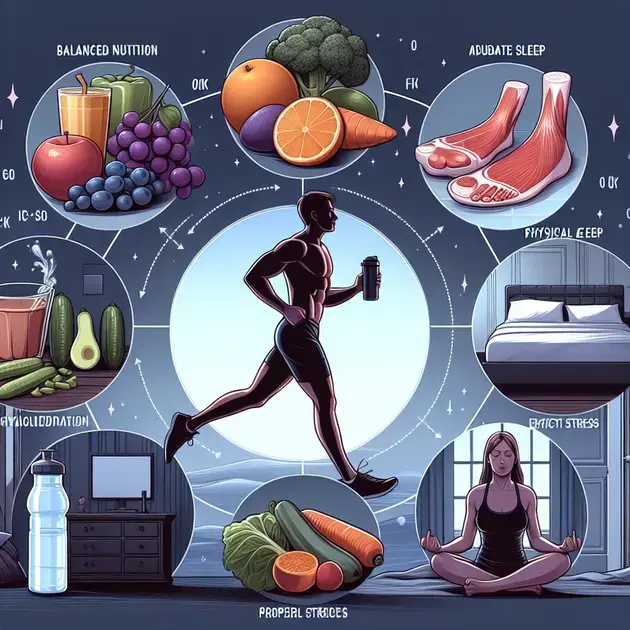Looking to shed some excess belly fat and achieve a healthier lifestyle? In this blog post, we will explore the top strategies for best belly fat burning that are backed by science and proven to be effective.
With the abundance of information available online today, it can be overwhelming to know where to start. That’s why we have compiled a list of the most up-to-date and practical tips to help you reach your belly fat burning goals in a sustainable way.

Effective Intermittent Fasting Techniques
Intermittent fasting is a popular method for weight loss and improved health. Here are some effective techniques to make the most out of your intermittent fasting journey:
1. Choose the Right Fasting Window
Select a fasting window that suits your lifestyle and preferences. Popular options include the 16/8 method, where you fast for 16 hours and eat within an 8-hour window, or the 5:2 method, which involves eating normally for five days and restricting calories for two non-consecutive days. Apps like Zero can help track your fasting hours and progress.
2. Stay Hydrated
During the fasting period, it’s essential to stay hydrated. Drink plenty of water, herbal teas, and black coffee to help curb hunger cravings and support your metabolism. Apps like WaterMinder can remind you to stay hydrated throughout the day.
3. Focus on Nutrient-Dense Foods
When breaking your fast, prioritize nutrient-dense foods like lean proteins, fruits, vegetables, and whole grains. Avoid overindulging in processed foods and opt for balanced meals to support your overall health. Websites like MyFitnessPal can help you track your meals and ensure you’re meeting your nutritional needs.
4. Incorporate Exercise
Pairing intermittent fasting with regular exercise can enhance your results. Consider high-intensity interval training (HIIT) or strength training during your eating window to maximize fat burning and muscle growth. Apps like Nike Training Club provide guided workouts for all fitness levels.
5. Monitor Your Progress
Keep track of your fasting schedule, meals, and physical changes to assess how intermittent fasting is impacting your body. Use a journal or apps like MyFast to log your progress and make adjustments as needed. Consistency is key to seeing long-term benefits from intermittent fasting.
Power of High-Intensity Interval Training
High-Intensity Interval Training (HIIT) is a time-efficient workout strategy that alternates between intense bursts of exercise and brief rest periods. Here’s how you can harness the power of HIIT for optimal fitness results:
1. Start with a Warm-Up
Prior to beginning your HIIT workout, warm up your muscles with dynamic stretches or a light cardio routine. Apps like FitOn offer dynamic warm-up sessions tailored to HIIT workouts to help prevent injuries.
2. Choose Your Exercises Wisely
Select exercises that target multiple muscle groups and elevate your heart rate quickly. Examples include burpees, mountain climbers, and kettlebell swings. Apps like 7 Minute Workout provide HIIT routines with various exercise options for a well-rounded workout.
3. Control Your Intensity
During the high-intensity intervals, give it your all and push yourself to work at maximum effort. Ensure proper form to prevent injury and maximize the effectiveness of each exercise. Apps like Tabata Timer can assist in timing your intervals and rest periods for optimal results.
4. Allow for Adequate Recovery
Recovery is essential for HIIT success. Allow your body to rest and repair between HIIT sessions to prevent overtraining and burnout. Apps like Recovery Record can help track your recovery days and ensure you’re prioritizing rest.
5. Track Your Progress
Monitor your fitness improvements by tracking metrics like heart rate, endurance, and strength over time. Use fitness apps like Strava or Apple Fitness+ to record your workouts and see how HIIT is enhancing your overall fitness level.
Nutrition Tips for Belly Fat Burning
To effectively reduce belly fat and promote a leaner physique, incorporating the following nutrition tips into your daily routine can make a significant difference:
1. Focus on Whole Foods
Opt for whole, minimally processed foods like fruits, vegetables, lean proteins, and whole grains. These foods are rich in nutrients and fiber, keeping you full longer and supporting a healthy metabolism. Sites like Healthline offer comprehensive guides on whole food nutrition.
2. Prioritize Protein Intake
Protein is essential for muscle repair and growth, and it can also aid in reducing overall body fat, including stubborn belly fat. Include protein sources like chicken, fish, tofu, and legumes in your meals. Apps like MyPlate can help you track your protein intake and ensure you’re meeting your daily requirements.
3. Limit Added Sugars and Processed Foods
Avoiding added sugars and processed foods can help decrease inflammation and reduce excess fat storage, particularly around the abdominal area. Be mindful of food labels and ingredients lists to make healthier choices. Websites like EatingWell provide recipes and tips for cutting out added sugars.
4. Stay Hydrated
Proper hydration is crucial for overall health and can aid in weight loss, including targeted belly fat reduction. Aim to drink plenty of water throughout the day and limit sugary beverages. Apps like Plant Nanny can remind you to stay hydrated and track your daily water intake.
5. Incorporate Healthy Fats
Include sources of healthy fats such as avocados, nuts, seeds, and olive oil in your diet. Healthy fats can help keep you full, support nutrient absorption, and promote a balanced hormone production, contributing to a reduction in belly fat. Check out resources like Healthline for information on incorporating healthy fats into your meals.

**Simple Lifestyle Changes for Belly Fat Reduction**
Introduction
When it comes to reducing belly fat, making simple lifestyle changes can have a significant impact on achieving your goals. These changes may not only help you shed unwanted weight but also improve your overall health and well-being.
Incorporating a Healthy Diet
One of the most crucial lifestyle changes for reducing belly fat is maintaining a balanced and nutritious diet. Focus on incorporating more fruits, vegetables, lean proteins, and whole grains into your meals. Avoid sugary beverages and processed foods, opting instead for water and homemade meals.
Regular Exercise Routine
Alongside a healthy diet, regular exercise is essential for reducing belly fat. Incorporate cardio exercises like running, cycling, or swimming to burn calories and fat. Strength training exercises can help build muscle mass, which in turn boosts your metabolism.
Get Sufficient Sleep
Believe it or not, sleep plays a crucial role in weight management, including belly fat reduction. Aim for seven to eight hours of quality sleep each night to regulate your appetite hormones and support overall metabolic functions.
Stay Hydrated
Drinking an adequate amount of water throughout the day can aid in reducing belly fat. Water helps to flush out toxins, improve digestion, and promote a feeling of fullness, reducing the likelihood of overeating.
Manage Stress Levels
High stress levels can contribute to weight gain, particularly around the abdominal area. Practice stress-reducing techniques such as mindfulness, meditation, or yoga to help lower cortisol levels and support belly fat reduction.
**
Conclusion
**
When it comes to reducing belly fat, simple lifestyle changes can make a world of difference. By incorporating a healthy diet rich in fruits, vegetables, lean proteins, and whole grains, you not only support weight loss but also enhance your overall well-being. Avoiding sugary beverages and processed foods in favor of water and homemade meals can further accelerate your progress.
Moreover, a regular exercise routine is essential for targeting belly fat. Combining cardio activities like running, cycling, or swimming with strength training exercises helps burn calories, build muscle mass, and rev up your metabolism, leading to more effective fat loss.
Remember, adequate sleep is not to be underestimated in your weight management journey. Aim for seven to eight hours of quality sleep each night to regulate your hunger hormones and optimize your metabolic functions. Staying hydrated throughout the day by drinking enough water is also crucial, as it aids in toxin removal, digestion, and curbing overeating tendencies.